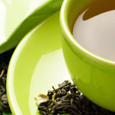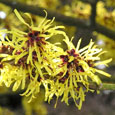Water: How much should you drink every day? Water is essential to good health, yet needs vary by individual. These guidelines can help ensure you drink enough fluids.
By Mayo Clinic staff How much water should you drink each day? It's a simple question with no easy answers. Studies have produced varying recommendations over the years, but in truth, your water needs depend on many factors, including your health, how active you are and where you live.
Although no single formula fits everyone, knowing more about your body's need for fluids will help you estimate how much water to drink each day.
Health benefits of water
Water is your body's principal chemical component and makes up about 60 percent of your body weight. Every system in your body depends on water. For example, water flushes toxins out of vital organs, carries nutrients to your cells and provides a moist environment for ear, nose and throat tissues.
Lack of water can lead to dehydration, a condition that occurs when you don't have enough water in your body to carry out normal functions. Even mild dehydration can drain your energy and make you tired.
How much water do you need?
Every day you lose water through your breath, perspiration, urine and bowel movements. For your body to function properly, you must replenish its water supply by consuming beverages and foods that contain water.
So how much water does the average, healthy adult living in a temperate climate need? In general, doctors recommend 8 or 9 cups. Here are the most common ways of calculating that amount:
- Replacement approach. The average urine output for adults is about 1.5 liters (6.3 cups) a day. You lose close to an additional liter (about 4 cups) of water a day through breathing, sweating and bowel movements. Food usually accounts for 20 percent of your total fluid intake, so if you consume 2 liters of water or other beverages a day (a little more than 8 cups) along with your normal diet, you will typically replace your lost fluids.
- Eight 8-ounce glasses of water a day. Another approach to water intake is the "8 x 8 rule" — drink eight 8-ounce glasses of water a day (about 1.9 liters). The rule could also be stated, "Drink eight 8-ounce glasses of fluid a day," as all fluids count toward the daily total. Although the approach really isn't supported by scientific evidence, many people use this easy-to-remember rule as a guideline for how much water and other fluids to drink.
- Dietary recommendations. The Institute of Medicine advises that men consume roughly 3 liters (about 13 cups) of total beverages a day and women consume 2.2 liters (about 9 cups) of total beverages a day.
Even apart from the above approaches, if you drink enough fluid so that you rarely feel thirsty and produce 1.5 liters (6.3 cups) or more of colorless or slightly yellow urine a day, your fluid intake is probably adequate. If you're concerned about your fluid intake, check with your doctor or a registered dietitian. He or she can help you determine the amount of water that's best for you.
Factors that influence water needs
You may need to modify your total fluid intake depending on how active you are, the climate you live in, your health status, and if you're pregnant or breast-feeding.
- Exercise. If you exercise or engage in any activity that makes you sweat, you need to drink extra water to compensate for the fluid loss. An extra 400 to 600 milliliters (about 1.5 to 2.5 cups) of water should suffice for short bouts of exercise, but intense exercise lasting more than an hour (for example, running a marathon) requires more fluid intake. How much additional fluid you need depends on how much you sweat during exercise, and the duration and type of exercise. During long bouts of intense exercise, it's best to use a sports drink that contains sodium, as this will help replace sodium lost in sweat and reduce the chances of developing hyponatremia, which can be life-threatening. Also, continue to replace fluids after you're finished exercising.
- Environment. Hot or humid weather can make you sweat and requires additional intake of fluid. Heated indoor air also can cause your skin to lose moisture during wintertime. Further, altitudes greater than 8,200 feet (2,500 meters) may trigger increased urination and more rapid breathing, which use up more of your fluid reserves.
- Illnesses or health conditions. When you have fever, vomiting or diarrhea, your body loses additional fluids. In these cases, you should drink more water. In some cases, your doctor may recommend oral rehydration solutions, such as Gatorade, Powerade or CeraLyte. Also, you may need increased fluid intake if you develop certain conditions, including bladder infections or urinary tract stones. On the other hand, some conditions such as heart failure and some types of kidney, liver and adrenal diseases may impair excretion of water and even require that you limit your fluid intake.
- Pregnancy or breast-feeding. Women who are expecting or breast-feeding need additional fluids to stay hydrated. Large amounts of fluid are used especially when nursing. The Institute of Medicine recommends that pregnant women drink 2.3 liters (about 10 cups) of fluids daily and women who breast-feed consume 3.1 liters (about 13 cups) of fluids a day.
Beyond the tap: Other sources of water
Although it's a great idea to keep water within reach at all times, you don't need to rely only on what you drink to meet your fluid needs. What you eat also provides a significant portion of your fluid needs. On average, food provides about 20 percent of total water intake. For example, many fruits and vegetables, such as watermelon and tomatoes, are 90 percent or more water by weight.
In addition, beverages such as milk and juice are composed mostly of water. Even beer, wine and caffeinated beverages — such as coffee, tea or soda — can contribute, but these should not be a major portion of your daily total fluid intake. Water is still your best bet because it's calorie-free, inexpensive and readily available.
Staying safely hydrated
It's generally not a good idea to use thirst alone as a guide for when to drink. By the time you become thirsty, you may already be slightly dehydrated. Further, as you get older your body is less able to sense dehydration and send your brain signals of thirst. On the other hand, excessive thirst and increased urination can be signs of a more serious medical condition. Talk to your doctor if you experience either.
To ward off dehydration and make sure your body has the fluids it needs, make water your beverage of choice. Most healthy adults can follow these tips:
- Drink a glass of water with each meal and between each meal.
- Hydrate before, during and after exercise.
- Substitute sparkling water for alcoholic drinks at social gatherings.
Although uncommon, it is possible to drink too much water. When your kidneys are unable to excrete the excess water, the electrolyte (mineral) content of the blood is diluted, resulting in low sodium levels in the blood, a condition called hyponatremia. Endurance athletes, such as marathon runners, who drink large amounts of water, are at higher risk of hyponatremia. In general, though, drinking too much water is rare in healthy adults who eat an average American diet.

 Looking for a simple resolution to improve your overall health? Start drinking green tea. My
Looking for a simple resolution to improve your overall health? Start drinking green tea. My
 Witch hazel is a liquid distillation of the leaves, bark and twigs of a common shrub
Witch hazel is a liquid distillation of the leaves, bark and twigs of a common shrub

